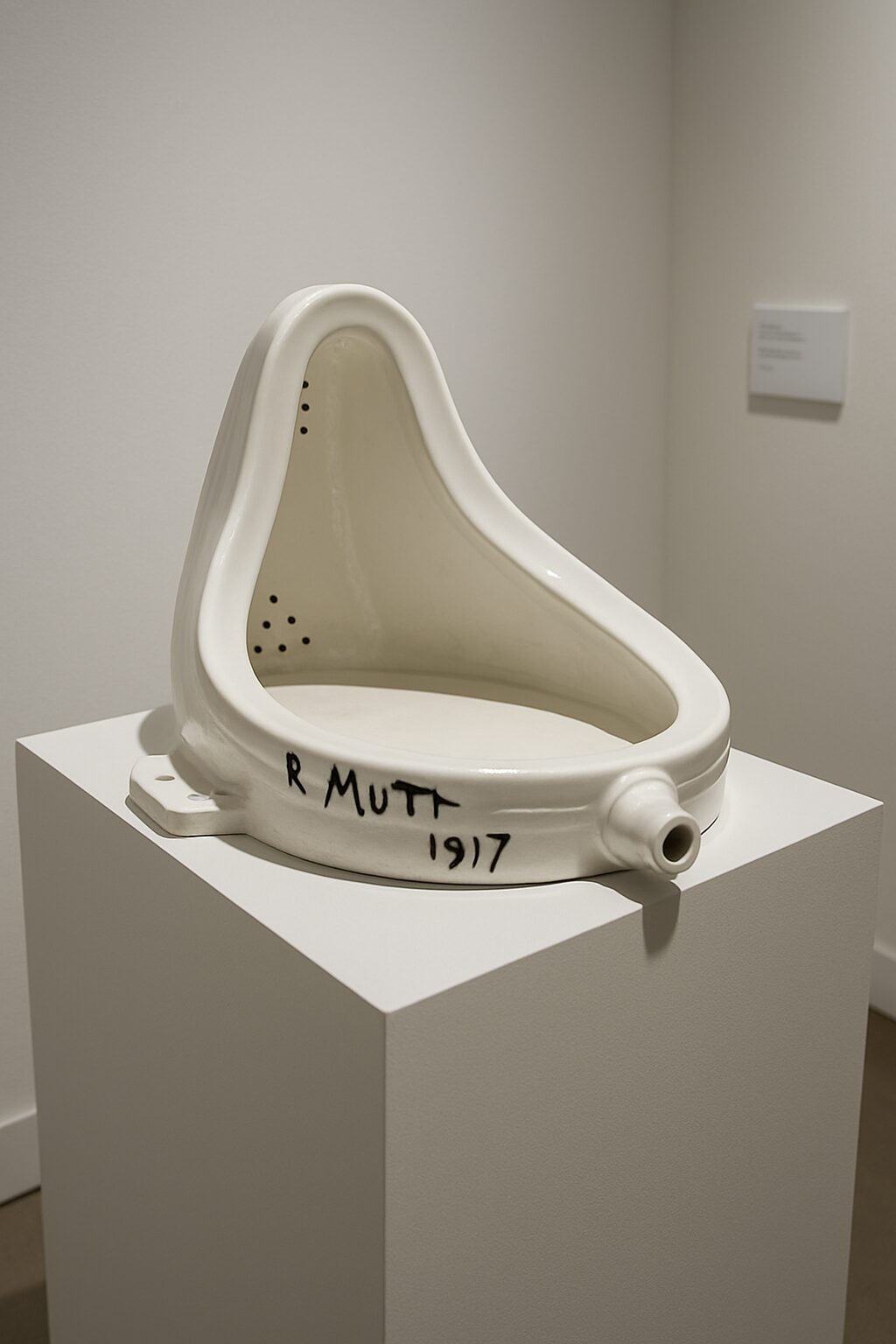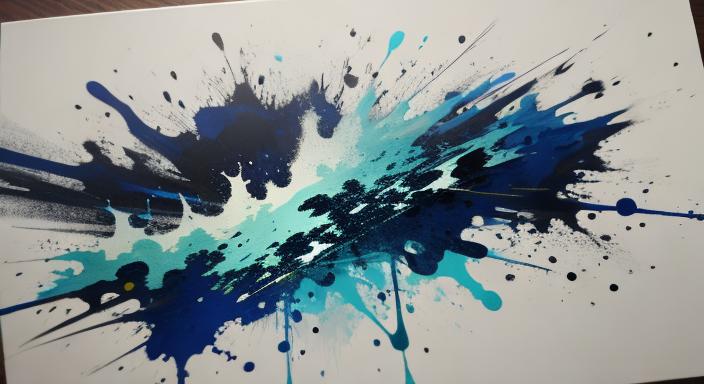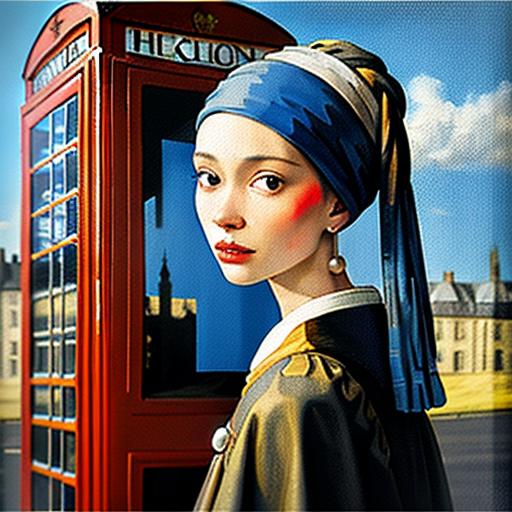Picture this: you’re walking through a museum and suddenly you see a regular urinal sitting on a pedestal with a fancy placard next to it. Your first thought might be, “Wait, is this really art?” You’re not alone in this confusion. The question of when does something become art has puzzled philosophers, critics, and art lovers for over a century. From Marcel Duchamp’s controversial “Fountain” to today’s AI-generated masterpieces, the line between art and non-art continues to blur, making this one of the most fascinating debates in the creative world.
Key Points Summary
- Four major theories attempt to define when something becomes art: Institutional, Formalist, Historical, and Expression
- Art institutions like museums and galleries play a crucial role in legitimizing artwork
- Digital age has created new challenges in defining artistic legitimacy
- The debate remains ongoing with no universal agreement on art’s definition
A Brief History: How Art Definition Has Evolved
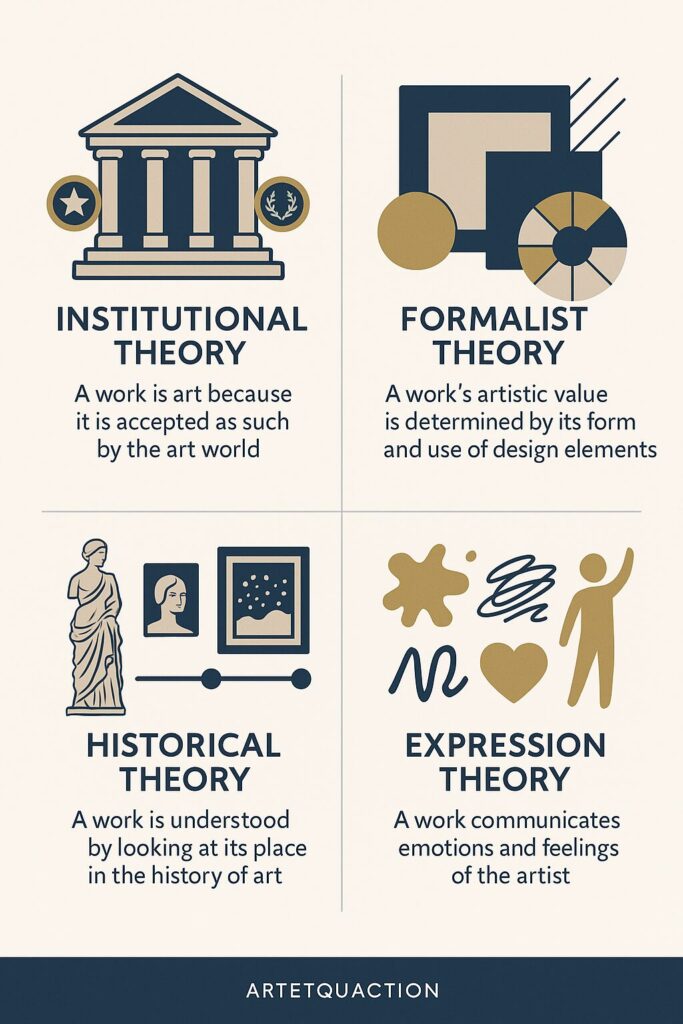
For thousands of years, people generally agreed on what art looked like. Paintings showed realistic scenes, sculptures captured human forms, and beauty was the main goal. But then the 20th century arrived and turned everything upside down.
The real shake-up started with movements like Dada, which deliberately challenged traditional ideas about art. Artists began asking, “Why does art have to be beautiful? Why can’t everyday objects be art?” This wasn’t just artistic rebellion – it was a complete rethinking of what is art itself.
The shift from classical to contemporary art wasn’t just about style. It fundamentally changed how we think about artistic legitimacy and cultural value. What once seemed obvious – that art meant skillful representation of beauty – suddenly became an open question.
The Four Major Theories: When Does Something Become Art?
1. Institutional Theory: The Art World Decides
According to the Institutional Theory, developed by philosopher George Dickie, something becomes art when the “art world” says it is. This includes museums, galleries, critics, and art historians. Basically, if these official gatekeepers display, discuss, or validate something as art, then it becomes art.
Think of it like a exclusive club with very particular bouncers. Your artwork doesn’t become “real art” until it gets past these cultural gatekeepers. This theory explains why Marcel Duchamp’s fountain caused such a stir – it forced institutions to either accept or reject something that challenged their authority.
Pros: Explains how controversial works gain acceptance over time Cons: Seems to give too much power to a small group of people
2. Formalist Theory: It’s All About Aesthetic Properties

Formalists believe art is defined by its visual elements – things like composition, color, form, and technique. According to this view, something becomes art when it successfully uses these formal elements to create aesthetic experience.
This theory focuses on essential elements of composition and understanding color theory. A painting becomes art not because of who made it or where it’s displayed, but because of how well it uses line, shape, color, and balance.
Pros: Provides concrete criteria for evaluation Cons: Struggles with conceptual and abstract works
3. Historical Theory: Connection to Art Tradition
The Historical Theory suggests something becomes art when it connects to previous art in meaningful ways. New artworks must relate to existing art traditions, either by continuing them or deliberately breaking from them.
This approach helps explain how revolutionary artists like Picasso could create completely new styles while still being considered artists. They weren’t creating in a vacuum – they were responding to and building upon art history.
4. Expression Theory: Emotional Communication
Expression theorists believe art happens when someone successfully communicates emotions or experiences through creative work. The key isn’t technical skill or institutional approval – it’s the genuine expression of human experience.
This theory embraces art symbolism and the secret language of art, focusing on meaning and emotional connection rather than formal properties.
Contemporary Challenges: Digital Age Dilemmas
Today’s art world faces unprecedented challenges in defining what constitutes art. Digital art vs traditional art debates rage as technology creates new possibilities for creative expression.
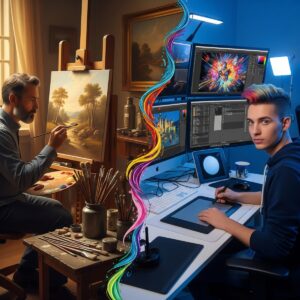
Consider these modern dilemmas:
| Art Form | Traditional View | Modern Debate |
|---|---|---|
| AI-Generated Art | Not human-created | Questions about creativity and authorship |
| NFT Art | Digital copies aren’t unique | Blockchain creates digital scarcity |
| Street Art | Vandalism or rebellion | Legitimate artistic expression |
| Social Media Art | Ephemeral and commercial | New platforms for artistic distribution |
The rise of AI art ethics has particularly complicated the definition debate. If a machine can create something visually stunning, does human intent and creativity still matter for artistic legitimacy?
Case Study: Marcel Duchamp’s Revolutionary Readymade
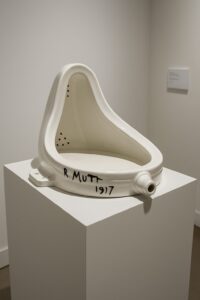
No discussion of when something becomes art would be complete without examining Marcel Duchamp’s “Fountain” from 1917. Duchamp took a regular urinal, signed it “R. Mutt,” and submitted it to an art exhibition. The work was rejected, but it sparked a debate that continues today.
“Whether Mr. Mutt with his own hands made the fountain or not has no importance. He CHOSE it. He took an ordinary article of life, placed it so that its useful significance disappeared under the new title and point of view – created a new thought for that object.“
Anonymous defense of Duchamp’s work
This single piece challenged every traditional theory of art definition and paved the way for conceptual art, installation pieces, and countless other innovations.
The Role of Institutions in Art Recognition
Art galleries and museums wield enormous power in determining what becomes recognized as legitimate art. Their curatorial decisions, exhibition choices, and acquisition policies shape public perception of artistic value.
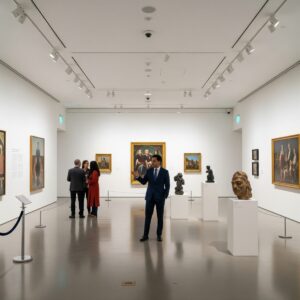
But this institutional power raises important questions about accessibility and democratization of art. Who gets to decide what has artistic merit? How do economic factors influence these decisions? These questions become even more complex when considering what makes paintings valuable.
Different Perspectives on Art Definition
The Democratic View
Some argue that art should be defined by popular opinion and cultural impact rather than institutional authority. If people connect with something emotionally and find meaning in it, perhaps that’s enough to make it art.
The Skill-Based View
Traditional craftspeople and realistic painters often maintain that technical skill and mastery should be primary factors in defining art. This view emphasizes the importance of training, practice, and demonstrable ability.
The Intent-Based View
Others focus on the creator’s intention. If someone creates something with the specific goal of making art – regardless of the result – then it becomes art through that intentional act.
YouTube Video Suggestion
FAQs: Is it Art?
What is the official definition of art?
There is no single official definition of art. Different institutions, cultures, and time periods have varying definitions. Art remains one of the most debated concepts in philosophy and aesthetics.
Who decides what qualifies as art?
Multiple parties influence art recognition: museums, galleries, critics, art historians, collectors, and increasingly, the general public through social media and digital platforms.
Can anything be considered art?
Theoretically, yes. The institutional theory suggests that anything can become art if it’s presented and accepted within artistic contexts. However, this remains highly debated.
Does art need to be beautiful to be art?
No. Modern and contemporary art has largely moved beyond beauty as a requirement. Art can be challenging, uncomfortable, or thought-provoking without being traditionally beautiful.
Can art exist without an audience?
This depends on your definition of art. Some theories require cultural recognition (audience), while others focus on the act of creation itself, regardless of viewers.
Is skill required for something to be art?
Not necessarily. Conceptual art and readymades have challenged the skill requirement. However, this remains one of the most contentious aspects of the art definition debate.
The Ongoing Evolution
The question of when does something become art will likely never have a definitive answer – and maybe that’s the point. Art continues to evolve, challenge boundaries, and reflect human creativity in new ways. From famous painting mistakes that turned into masterpieces to cutting-edge digital creations, the definition of art expands with each generation.
What matters most isn’t reaching a final answer, but engaging with the question itself. Whether you’re looking at a classical painting or a controversial installation, asking “Is this art?” opens up conversations about creativity, meaning, and human expression that enrich our understanding of culture and ourselves.
The debate continues, and that’s exactly why art matters – it keeps us thinking, questioning, and discovering new ways to see the world around us. The next time you encounter something that makes you wonder when does something become art, remember that you’re participating in one of humanity’s oldest and most important conversations.
Important Resources
Academic Sources
- Stanford Encyclopedia of Philosophy: Definition of Art
- Internet Encyclopedia of Philosophy: Philosophy of Art
- Museum of Modern Art: Collection and Research
Art Theory Resources
- Tate Modern: Art Terms and Concepts
- Metropolitan Museum: Heilbrunn Timeline of Art History
- Smithsonian: Art and Culture Resources

